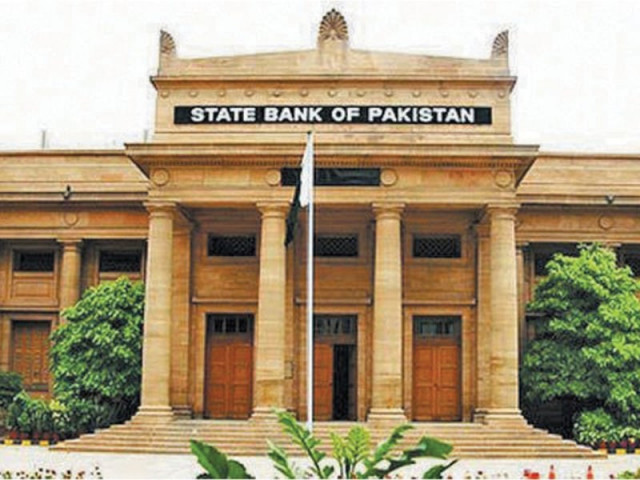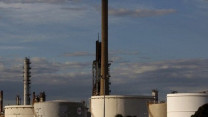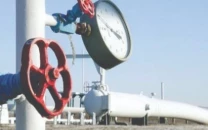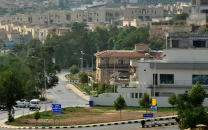SBP warns of significant risks
MPC report flags inflationary pressures, urges fiscal discipline and reforms

The State Bank of Pakistan (SBP), in its latest Monetary Policy Report titled "Staying the Course", said that while macroeconomic conditions have improved in recent quarters, significant risks still cloud the outlook. Stubborn inflation, external vulnerabilities, and deep-rooted structural constraints will require sustained reforms and prudent policymaking to ensure stability.
Domestically, the SBP underscored persistent structural weaknesses limiting growth potential. Drawing on its Half Yearly Report for 2024-25, it cited low productivity, weak innovation, poor skills investment, and inefficiencies in industrial processes as major hurdles to competitiveness.
Labour market monitoring is another challenge. Pakistan's official labour force statistics are released only annually and often irregularly, leaving information gaps. To address this, the SBP has developed high-frequency labour market indicators from alternative sources like online job postings and newspaper ads. These suggest labour demand is gradually recovering in the second half of FY25, especially in the services sector.
Agriculture remains critical yet vulnerable. Satellite data shows the vegetation index for cotton crops fell this year by 5.7% in Sindh and 2.4% in Punjab, mainly due to reduced cultivation. Recent rainfall has improved water storage and soil moisture for other Kharif crops, but climate variability and water management remain long-term threats.
On fiscal policy, the SBP stressed aligning fiscal and monetary measures to ensure stability. Failure to contain fiscal deficits or reduce reliance on external borrowing could heighten debt risks and crowd out private investment. Structural reforms in energy pricing, taxation, and governance are essential to support monetary policy.
The central bank also acknowledged limitations in Pakistan's traditional data systems, which are often slow and infrequent. It has expanded its big data initiative, using satellite-based indicators like nighttime light intensity for urban activity, nitrogen dioxide emissions for industrial output, and vegetation indices for agriculture. These tools provide timely insights but remain complementary to official data. Inflation has eased from last year's highs but is still above the SBP's medium-term target of 5-7%. The moderation is due to lower global commodity prices, better domestic supply, and a stable exchange rate. However, "sticky" core inflation, excluding volatile food and energy prices, remains a concern.
The SBP flagged volatile international oil and energy prices as a major risk. Geopolitical tensions in the Strait of Hormuz and global demand swings could spike fuel costs, feeding into local prices and widening the import bill. "Exchange rate pass-through remains an important channel through which external shocks can transmit to domestic inflation," the report noted.
The global monetary environment is also challenging. With the US Federal Reserve keeping interest rates high, narrowing the interest rate gap too quickly could trigger capital outflows. This could pressure the rupee, weaken external buffers, and undermine the disinflation process. On trade, the SBP pointed to rising global protectionism and tariff disputes that could disrupt supply chains, raise import costs, and dampen export demand. Pakistan's heavy reliance on textiles makes it vulnerable to such shocks.
The SBP expects recent policy rate cuts to support investment and consumption in coming quarters but warns against complacency. "Monetary conditions remain appropriately tight on a forward-looking basis to anchor inflation expectations," it said, adding that lasting stability will require prudent monetary management, fiscal discipline, and structural reform.
Finance Minister Muhammad Aurangzeb said there is more room for the SBP to cut the key policy rate from 11%, citing positive indicators. Speaking to businessmen in Islamabad ahead of a Moody's ratings update, he expressed hope for similar upgrades from other agencies following Fitch and S&P. "We are hopeful of progress in terms of the policy rate going south," he said.
Aurangzeb stressed that it was his personal view that a cut could come toward year-end, but the central bank would have the final say. The next policy decision is due September 15. The SBP kept rates at 11% on July 30, defying analyst forecasts of a 50-100 basis point cut. It cited a deteriorating inflation outlook due to higher energy prices, with July inflation accelerating to 4.1% year-on-year.
Following Moody's upgrade, Pakistan's international bonds rose up to 1 cent, trading between 90 and 100 cents on the dollar, reaching their highest levels since early 2022, when debt fears had pushed them as low as 30 cents.
WITH ADDITIONAL INPUT FROM REUTERS





















COMMENTS
Comments are moderated and generally will be posted if they are on-topic and not abusive.
For more information, please see our Comments FAQ